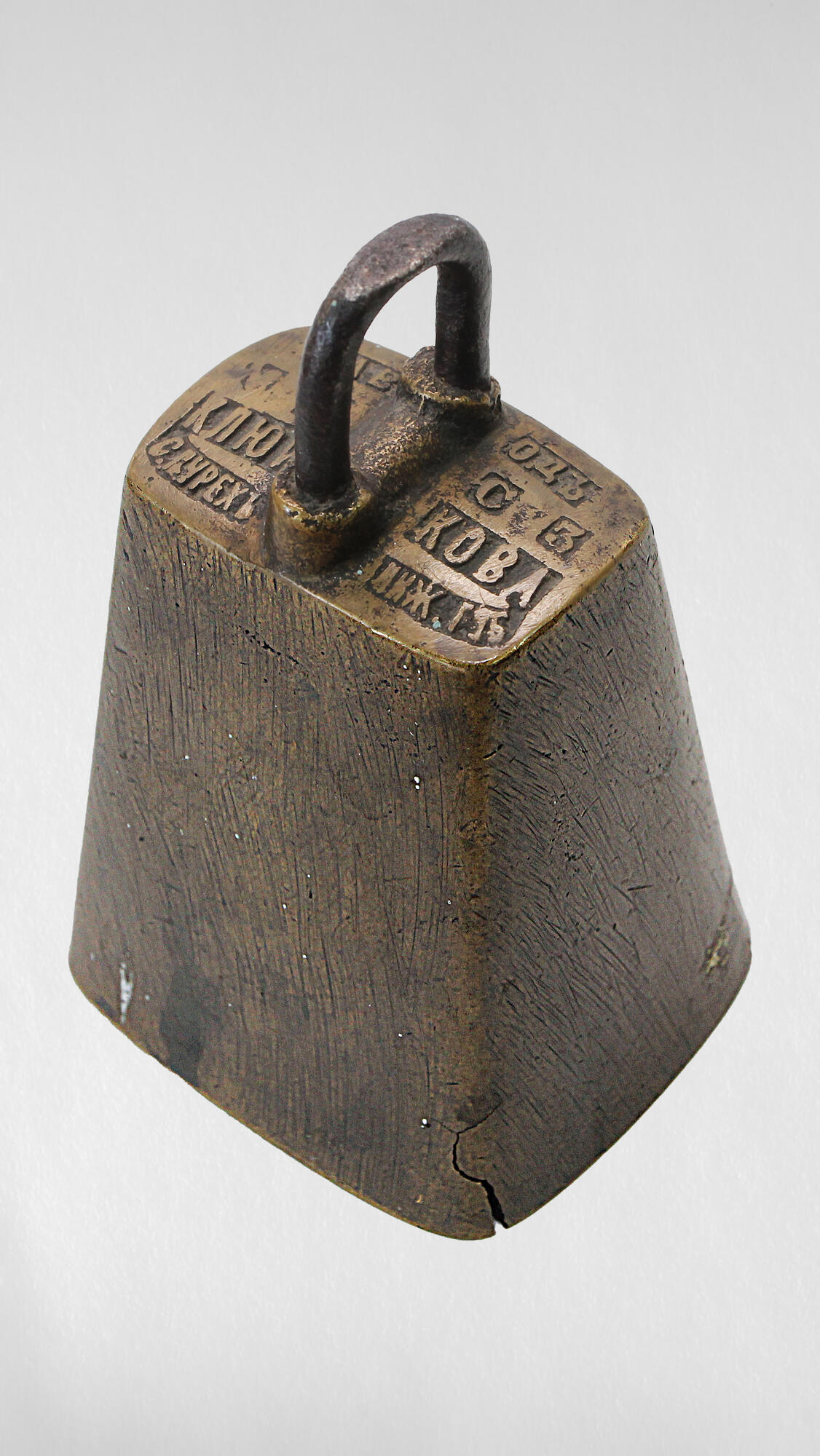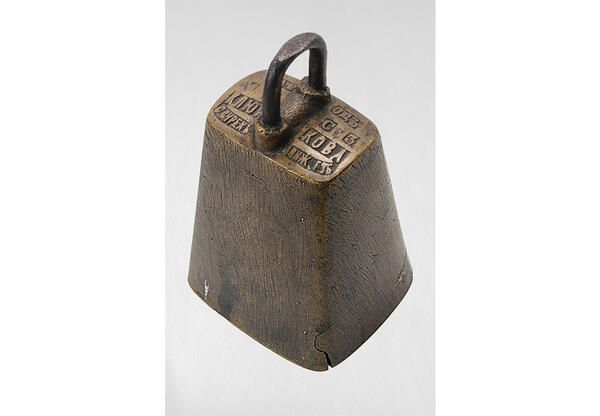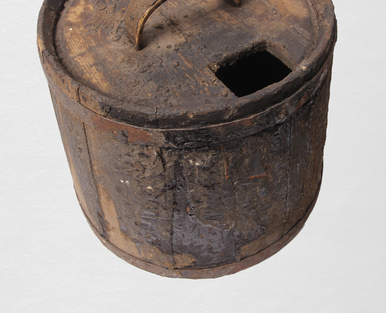The settlement and reclamation of Siberian land began more than five centuries ago. The first who started to research new territories were ‘adventurous men’ or pathfinders. They called Siberia a ‘totally unknown country’ which attracted them firstly because of valuable fur. The hunt was very extensive there.
The bell Botalo is one of the museum items brought to Siberia by frontiersmen. Cows and horses wore this bell. It helped to trace animal’s location during pasturage. It did not matter how the bells looked like. They had to be simple, cheap, and make a dull sound which was unpleasant for predators.
The bell Botalo from the museum collection is made from copper. It has a trapezoid shape, and also the hole through which a leather belt or a cord was fixed on the animal’s neck.
Those bells were made from different metals, sometimes even from wood. However, they looked the same way as in ancient times. Cowbells had a trapezoid or rectangular shape, with a square or rectangular base.
There is a metal or wooden bell pellet inside the cowbell which made the sound when it hit the sides of the bell. This bell was not tuneful, but every cowbell had its own ‘voice’. The owners indicated easily the sound of their animal’s bells. The hired cattlemen controlled animal’s moving and found lost one by the sound of bells.
Usually, all cows from one or several nearest villages gathered in one herd and walked near the peasant’s houses, that is why all cowbells looked similar.
Also, the cowbells were considered talismans. The peasants believed that bells saved cows from evil spirits like leshiy (a mean spirit in the woods), vodyanoy (a mean spirit of lakes and rivers), kikimora (a mean spirit of the swamp), and others. It was believed that the animal with the bell would not be drowned, lost in the wood, and died in the swamp. The bell Botalo was also hung on the front doors, in the gardens, and vegetable patches for scaring spirits away.
The bell Botalo is one of the museum items brought to Siberia by frontiersmen. Cows and horses wore this bell. It helped to trace animal’s location during pasturage. It did not matter how the bells looked like. They had to be simple, cheap, and make a dull sound which was unpleasant for predators.
The bell Botalo from the museum collection is made from copper. It has a trapezoid shape, and also the hole through which a leather belt or a cord was fixed on the animal’s neck.
Those bells were made from different metals, sometimes even from wood. However, they looked the same way as in ancient times. Cowbells had a trapezoid or rectangular shape, with a square or rectangular base.
There is a metal or wooden bell pellet inside the cowbell which made the sound when it hit the sides of the bell. This bell was not tuneful, but every cowbell had its own ‘voice’. The owners indicated easily the sound of their animal’s bells. The hired cattlemen controlled animal’s moving and found lost one by the sound of bells.
Usually, all cows from one or several nearest villages gathered in one herd and walked near the peasant’s houses, that is why all cowbells looked similar.
Also, the cowbells were considered talismans. The peasants believed that bells saved cows from evil spirits like leshiy (a mean spirit in the woods), vodyanoy (a mean spirit of lakes and rivers), kikimora (a mean spirit of the swamp), and others. It was believed that the animal with the bell would not be drowned, lost in the wood, and died in the swamp. The bell Botalo was also hung on the front doors, in the gardens, and vegetable patches for scaring spirits away.



